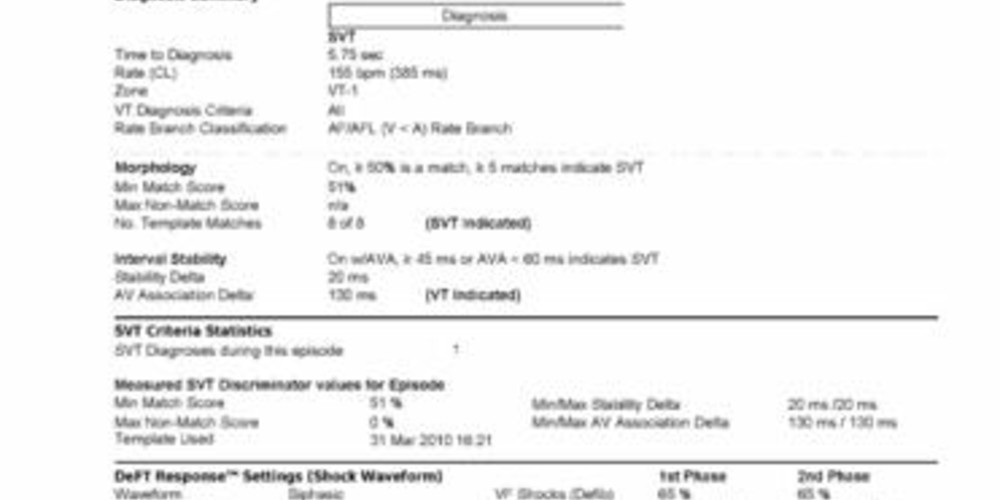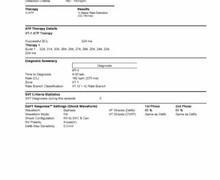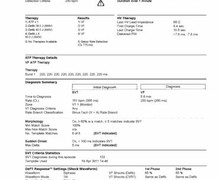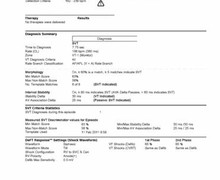Dual chamber discrimination: V<A
Tracing
Manufacturer Abbott
Device ICD
Field Discrimination
N° 54
Patient
This 68-year-old woman, recipient of a St Jude medical Promote Accel CRT-D implanted in the context of dilated cardiomyopathy with left bundle branch block, had a history of paroxysmal AF and His bundle ablation and was seen for a routine follow-up.
Main programmed parameters
- VF zone at 214 bpm, VT-2 zone at 184 bpm and VT-1 zone at 150 bpm
- 12 cycles in the VF zone, 12 cycles in the VT-2 zone and 16 cycles in the VT-1 zone were needed for the diagnosis
- Effective discrimination in the VT-1 and VT-2 zones
- V<A: if all criteria are fulfilled; morphology (50%, 5 out of 8), stability (45 ms), with 60-ms AV association delta, 12 intervals
- V=A: if all criteria are fulfilled; morphology (50%, 5 out of 8), sudden onset (18%)

Graph and trace
Narrative
Episode diagnosed as SVT in the V<A arm. This patient needed 2 out of 2 criteria for the diagnosis of VT; however, the discriminators were discordant, as morphology indicated SVT while stability indicated VT. Hence, SVT was diagnosed and no therapy was delivered.
Tracing
- AMS for AF, biventricular stimulation and no AV conduction;
- regular tachycardia with unclassified cycles initially;
- the pacing mode during the episode is DDI after 3 T1 classified cycles; it is noteworthy that the percentage of similarity was above the programmed 50% threshold;
- from this complex onward, 12 cycles elapsed before the diagnosis, during which stability was analyzed;
- from this complex onward, 8 cycles elapsed before the diagnosis, during which morphology was analyzed;
- diagnosis of SVT in the V<A arm (<SVT); the morphology of the 8 analyzed complexes is in favor of SVT (>50% similarity of morphology); the rhythm is stable, without AV association: out of the 12 analyzed cycles, the second shortest and second longest measured, respectively, 387 and 410 ms, representing a 23-ms delta. Because all criteria were needed for a diagnosis of VT, SVT was diagnosed and therapy was not delivered;
- spontaneous termination of the arrhythmia and diagnosis of return to sinus rhythm.
Other articles that may be of interest to you







This patient, who had undergone His bundle ablation, was pacemaker-dependent and no discrimination of arrhythmias should have been programmed, particularly since morphology might be misleading, as in this example. This tracing shows, once again, that a high proportion of arrhythmic episodes end spontaneously. In this case, the error of discrimination had the advantage of preventing a non-indispensable therapy since the arrhythmia ended spontaneously.